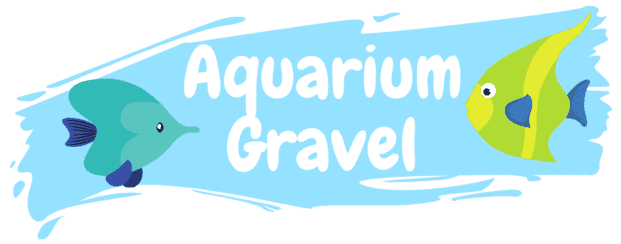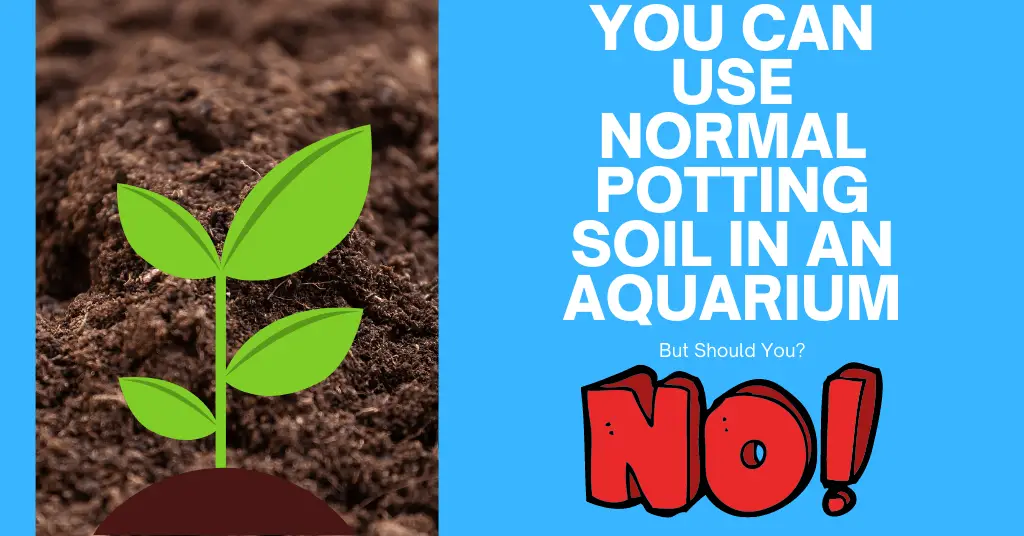Last Updated on July 4, 2021 by cmoarz
There are a lot of articles out there already explaining how you can actually use normal soil in an aquarium. Let me lay that out for you:
Yes, you can use regular potting soils, even soils from your garden, In your aquarium. However, it comes at a price. These soils are often teeming with various debris, glass, chemicals, and parasites. They are also very very messy when being placed in a water environment.
So, With that being said, I want to talk you out of using normal garden or planting soils in your planted water aquarium rather than actual aquarium substrates. Why?
Because there are better options.
We don’t live in the ’90s and early 2000’s anymore. We have some really amazing aquariums substrates available to us today that weren’t available back in the day. So in this article, I’m going to do my best to talk you out of this silly idea of using regular potting soil in lieu of actual aquarium potting soil.

My personal experience with using potting soil in a planted tank
Table of Contents
First I think it’s important to start off with my own personal experience using regular potting soil in a planted tank.
I started using regular potting soil in my planted tank that was a lot less complicated than it is now. It was great as I could really get some better plants and the results were fantastic! I thought, “What could go wrong?” This was actually going to be a really good idea but as I’m sure you’ve guessed by now, it wasn’t.
What I expected was a perfectly settled thank with beautiful brown soil filled with awesome powerful plant nutrients and all that yada yada.
Oh, how naive I was.
Sure, the nutrients might have been there, But the nice part sure wasn’t.
It was constantly spewing out random debris. Every time I thought I got it all, more would pop up seemingly out of nowhere.
So I spent a ton of time removing random crap and debris from the aquarium.
It took weeks to settle properly. The water was always a mucky awful mess. And every time I had to go in there to get more debris out, it would get worse.
Don’t even get me started on actually planting plants into this slimy, disgusting, brown toilet water of an aquarium.
Every time I would attempt to add a plant, get its roots nice and deep, it would put up a huge bloom of dirt that would take another additional days and weeks to settle out properly.
Truth be told, it never fully did settle out. The water always remained slightly yellow.
And I’m not even going to talk about the damage it did to my aquarium filter.
They just aren’t built for filtering out dirt, mud, dead leaves, sticks/twigs, and dead drowned insects.
Oh, speaking of insects, You might think you got some dirt with none in it, But boy do they show up once you add the water. Crawling up the side of the tank like no one business.
The only real way to avoid that particular problem is to buy sterilized dirt. And oftentimes you will still have dead insect carcasses floating to the top instead.
There are so many other small issues I could talk about but this article would go on far too long if I did.
This went on for several months until one day I had enough and finally gave in and bought some aquarium soil to try out instead of normal potting soil. The difference was night and day!
I never again had that nightmare situation come back nor did I have to worry about it anymore. Here’s what I used.
So what soil should I use in my planted aquarium instead?
My personal recommendation for aquarium potting soil substrate for a live planted tank is a mix of sand (bottom layer) and Fluval volcanic rocks. it’s also a good idea to top off the Fluval aquarium potting soil with a small layer of aquarium-safe pebbles as it’s very light.
What is Fluval volcanic stratum?
Fluval is a name brand. it’s a company that produces special types of stratum substrate. It takes volcanic soil, usually from the foothills of Mount Aso Volcano in Japan, One of the world’s most active volcanos.
They compress the soil into little pellets. These pellets are light, a bit sensitive, but packed with nutrients.
There are so many nutrients in volcanic soil. It’s really a wonder why people go out of their way to use regular potting soil in their planted tanks when there is such an easy alternative. The benefits of using Fluval rock are that it contains some of the following minerals: Iron, Potassium, Calcium, Sodium, Manganese, and Magnesium
It also has beneficial trace elements such as Zinc, Boron, and Strontium.
It is also often mixed with silica sand which has great water-holding properties while it also gives more stability to the tank. There are also additional benefits for using the volcanic stratum like being able to grow plants at a very high-density thanks to the intense nutrient concentration.
This soil does not compact. It’s very light and needs help to keep plants in place. That’s where the sand layer at the bottom of the tank and the pebble layer at the top is super useful.
It allows the plants to root deep without any issue. It’s especially great for plants that like to root around rocks.
Its very porous structure will help maintain and colonize large quantities of beneficial bacteria that help maintain your tank’s appearance and health.
Now, there are some drawbacks.
If you need high pH water, You will need to supplement it with another product. That’s because a side effect of this volcanic aquarium substrate is to lower the overall pH of the tank.
That’s super easy to do with various powdered additives or a simple cuddle bone or adding crushes coral and snail shells into the filter.
The other drawback is its price. It’s a specialized substrate so it costs about 15-20USD per 4.4 lbs. However, that should be enough for most aquariums that are also using sand as a bottom layer.
It settles fast, and the water will be crystal clear within a few hours. Just note do not rinse your volcanic gravel before adding it into your tank. It sounds ‘wrong’ but all that does is agitate and make it more cloudy. You may even destroy the soil if you’re too rough with it. It’s very delicate.
Just dump it in.
About
Owner of AquariumGravel.com and also owner of actual Aquarium Gravel believe it or not! ;). Setting up beautiful aquarium sceneries and habitats since I was very young. Enjoy!
- Web |
- More Posts(290)

